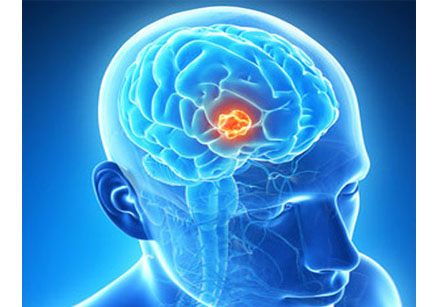Brain Tumor Surgery
Introduction
Brain tumors are concerning and alarming diagnoses that scare most individuals. Earlier having a brain tumor meant awaiting certain death. These days with advancement of therapy for brain tumors many can look forward to longer lifespans with the diagnosis and adequate brain tumor surgery.
Brain is composed of about 10 Billion (10,000,000,000) working brain cells. These are basically nerve cells or neurons that make over 13 Trillion (13,000,000,000,000) connections with each other to form complex networks and connect various parts of the body with the supercomputer encased within the skull. Apart from neurons there are also supporting cells called as trocytes. These cells are the support staff of the brain that act as scaffold for the working brain cells and other structures. Oligodendrocytes, another type of brain cell, are much fewer in number; they are primarily responsible for making the sheaths or myelin of the wiring system of the neurons. The brain is covered in sheaths called the meninges. The brain is further suspended in a watery fluid known as Cerebrospinal Fluid (CSF). These fluid spaces, when obstructed by a tumor, may enlarge and cause pressure within the skull to increase dangerously. This is referred to as hydrocephalus or water-on-the-brain.
Iran has made significant progress in neurosurgery and The world renowned Iranian scientist in neurological surgery Professor Majid Samii has garnered the 2014 Golden Neuron Award. We have all the information you need about public and private clinics and hospitals that provide Neurosurgical surgeries in Iran, Islamic Republic Of with the best quality and lowest possible price

In some cases the surgeon makes a smaller hole and inserts a tube with a light and camera on the tip. This is called an endoscope.
Brain tumors usually begin in one type of cell and may spread to other brain cells. Brain tumors can arise either from the brain itself (primary brain tumors: astrocytoma – of the astrocytes, oligodendroglioma – of the oligodendrocyts), or its coverings (meningiomas) Brain tumors may also originate from elsewhere that has spread to the brain.
It is important to remember that many brain tumors are actually not cancers and they once removed usually do not return. However, a surgery to remove them is usually an emergency since the tumors press upon vital structures of the brain.
Surgical Procedure
Brain tumor surgery is performed in the hospital. Before the surgery the part to be operated is cleaned and shaved. The scalp is cleansed with an antiseptic lotion before the operation. The operation in most cases is performed under general anesthesia wherein the patient is rendered unconscious. The surgeon then makes an incision over the scalp. A hole is drilled into the skull. Sometimes a bone flap is lifted to expose a larger area of the brain for operation.
In some cases the surgeon makes a smaller hole and inserts a tube with a light and camera on the tip. This is called an endoscope. The surgery will be done with tools placed through the endoscope. MRI or CT can help guide the doctor to the proper place in the brain. The tools are used to remove the tumor.
There are various new technologies that are becoming available to treat these tumors: lasers, stereotactic computers, cryosurgery, thermal killing machines, ultrasound, radiosurgery, the Gamma Knife, the X-Knife, photoirradiation, blood: brain barrier disruption, boron neutron capture, etc. these may be used in some set ups for removal of the tumor.
After brain tumor surgery the operative area is suctioned gently to remove the excess fluid and collected blood. A tiny tube is placed within the suture to drain off the excess fluid. The bone flap is sewn back using small metal plates, sutures, or wires. The skin is sutured and the area is bandaged.
Post Surgical Considerations
Recovery after brain surgery depends on the nature of the operation and the extent of surgery. The head end of the bed is usually kept raised to help reduce swelling of head and face. Medications are usually prescribed to alleviate pain. Hospital stay of around a week is usual. Some amount of rehabilitation or physical therapy may be needed.
Common complications include those due to anesthesia that include allergies to the anesthetic agents, problems of breathing etc. Other risks include problems with memory, speech, hearing, sight, movement, muscle weakness, balance, muscle co-ordination and other functions.
Sometimes patients may develop bleeding, stroke, coma, seizures, infections and swelling of the brain after brain tumor surgery. These are serious complications that need immediate management.